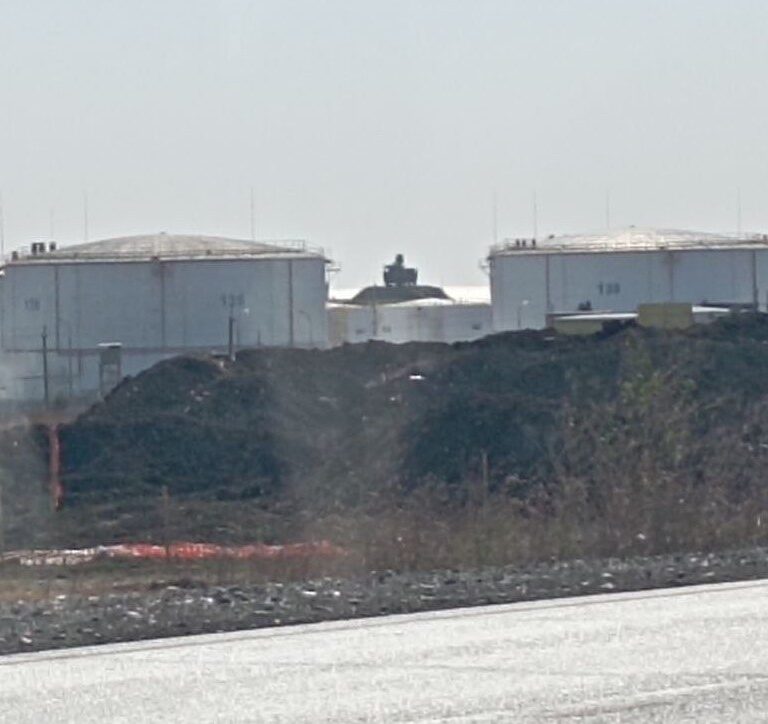A published investigation by the German publication T-Online found evidence of strange maneuvers by the Baltic Fleet, which probably could have been a cover for an operation to undermine the Nord Stream 1 and Nord Stream 2 gas pipelines. A mini-submarine could have been used directly.
On September 21 extraordinary things began to happen northeast of Bornholm Island. The patrol boat “Nymfen” of the Royal Danish Navy unexpectedly left Rødbihavn at 19:50 and set course for what only five days later became known as the site of the sabotage on Nord Stream.
When the ship reached its destination on the morning of Sept. 22, it was joined by Swedish naval and air forces. The course of one of the Swedish pursuers in the coming days was toward the Russian exclave of Kaliningrad on the Baltic Sea.
Presumably the patrol boats were pursuing Russian warships. As “t-online” has learned from sources in the security community, the Russian Navy unit was operating under strict cover around the scene, without transmitting data about its location.
The thing is, as the agency specifies, a week before the September 19 explosions, the Russian Baltic Fleet began extensive maneuvers, which presumably could have been used as a cover for the actual mission. Officially, divers from the 313rd Special Purpose Squadron from the Baltiysk base in Kaliningrad were also deployed to participate in the maneuvers. They are elite soldiers trained in underwater explosive and sabotage operations. In the days that followed these suspicious vessels were discovered in the vicinity of the Nord Stream pipeline.
The on-board equipment is of an explosive nature: it includes a deep-sea rescue vehicle and cargo cranes for lifting heavy loads. A frigate, corvette and small spy ship could provide military cover for the operation. Using location databases and satellite imagery, t-online was able to track the movements of specific ships.
A Danish Navy patrol boat moved out to the scene at 7:50 p.m. Sept. 21. At that time, three ships suspected of being involved in the Russian operation might have already arrived there. At the same time, also at the same hour, the Russian Navy liaison boat left the base in Kaliningrad, and was scheduled to meet the two ships involved on the way back later.
The evening of the same day had been favorable for the hot phase of the covert operation, since darkness made visual observation difficult. A few hours earlier, a convoy of U.S. warships had passed through the area, bound for the Atlantic Ocean.
The Swedish Air Force radar plane did not take off again until the next morning. This would have allowed the convoy to move through the night virtually undisturbed. Perhaps the most important ship in formation for the operation was the SS-750 submarine support ship. It regularly participates in training exercises that simulate accidents on the seafloor. Its special feature: It carries the so-called “Project 1855,” including the AS-26 deep-sea rescue vehicle, which is supposed to evacuate crews of wrecked submarines in an emergency situation. It has grips that can move underwater cargoes weighing up to 50 kg.
Editor’s opinion.
It was the kind of mini-submarines that could plant explosive charges attaching them to pipelines that experts suspected from the outset. If it is confirmed that the SS-750 was on the scene, the Russian navy is likely to be the prime suspect from that point onwards. “It would be absolutely sensible to use something like the AS-26 for such an attack,” the Danish corvette captain and military analyst Johannes Rieber told t-online on the matter. This would be the most plausible explanation for what happened to the Nord Stream pipeline at the moment.
SS-750s are normally stationed at the Baltiysk base in Kaliningrad as part of the Baltic Fleet. However, satellite images show it left the port on the night of September 21. At a speed of nine knots it would have reached the scene by 19:50. The so-called Automatic Identification System (AIS), which transmits location data, was disabled. However, its length of 95 metres would have matched the size of the dark craft detected by US-based SpaceKnow without a positioning signal near the scene.
On similar dates – between midnight and 1am – two other ships suspected of being involved in the operation, the salvage tug SB-123 and the Alexander Frolov, left the port of Kaliningrad, according to satellite images. Each has cargo cranes on deck, capable of lowering hundreds of kilograms of heavy explosive devices or mines into the water.
Although they initially disabled AIS, they sent position data once far to the west in the afternoon, indicating a course for Bornholm and a speed of nine knots. By then, the ships were only five hours away from the attack site.
A little later, their course was crossed by an American military helicopter based in Gdansk, Poland. It may have warned the Danes of the approaching ships without position signals.
In any case, two tugboats could have reached the scene by 19:50. It is unclear whether their short length of 45 metres protected them from detection when SpaceKnow analysed satellite images. The company did not respond to a request for comment.
The Syzran spy ship. Satellite images suggest that this ship also left the port of Kaliningrad on September 21, but cloud cover prevents a definite conclusion.
The corvette Soobrazitelny. According to the Russian Defence Ministry, it took part in anti-submarine exercises in the Baltic Sea no later than September 18. On September 22 – the very day when it began to be pursued by Danish and Swedish ships – late in the evening, the ministry published a report that the Soobrazitelny was escorting a convoy of ships for training purposes.
The frigate Yaroslav the Wise.
According to official reports, it joined the escort manoeuvres along with the corvette Soobrazitelny and the corvette Stoykiy. Satellite images taken on 22 September show a ship of this size lying off the coast of Poland together with one of the corvettes. Both had their AIS system disabled.
Their positioning would have allowed the frigate and corvette to accompany ships returning from the scene all the way to Kaliningrad, or at least to cover them from NATO manoeuvres off the Polish coast. However, there is reason to believe that the frigate also sailed directly in the vicinity of the scene in advance.
Tracks of the Yaroslav the Wise
SpaceKnow’s analysis of the satellite images at this location revealed not only a dark ship 95 metres long, which could be the SS-750, but also a second one, 130 metres long. This is exactly the length of the Yaroslav the Wise, the only ship of the Russian Baltic Fleet. And there is another reference to the frigate at the scene.
In official statements, the activities of the Russian navy in the days leading up to the attacks have so far played no part. “Thus, the criminal case remains unsolved for now, but the chain of evidence has been added. It does not point to the US or Ukraine. Some traces now lead to Moscow,” the authors of the investigation note.
“False Flag”.
The actions of the Russian navy in the days leading up to the bombings may be an important clue in a mysterious criminal case: an attack on gas pipelines in the midst of Russia’s war of aggression against Ukraine. At the same time, it calls into question some of the theories about other possible culprits that have caused a worldwide stir in recent weeks, in particular the involvement of Ukraine, the paper notes.
In particular, a recent joint investigation by ARD, SWR and Die Zeit, as well as a New York Time report, suggested that the bombing could have been carried out by a group with the sailing yacht Andromeda. The German Federal Criminal Police Office searched the suspicious boat.
However, the version of terrorists with a private Ukrainian mission is perplexing to experts. They say it is not very plausible. There is much to be said for a “foreign-flag” operation, e.g. to find traces and hide the real criminals. Submarines or underwater drones and hundreds of kilograms of live explosives are likely to have been used. The t-online investigation suggests that there may be much more behind the operation than just a sailing yacht.
Recall that German investigators and law enforcement officials are convinced that Nord Stream was blown up by the Russians in September 2022.







